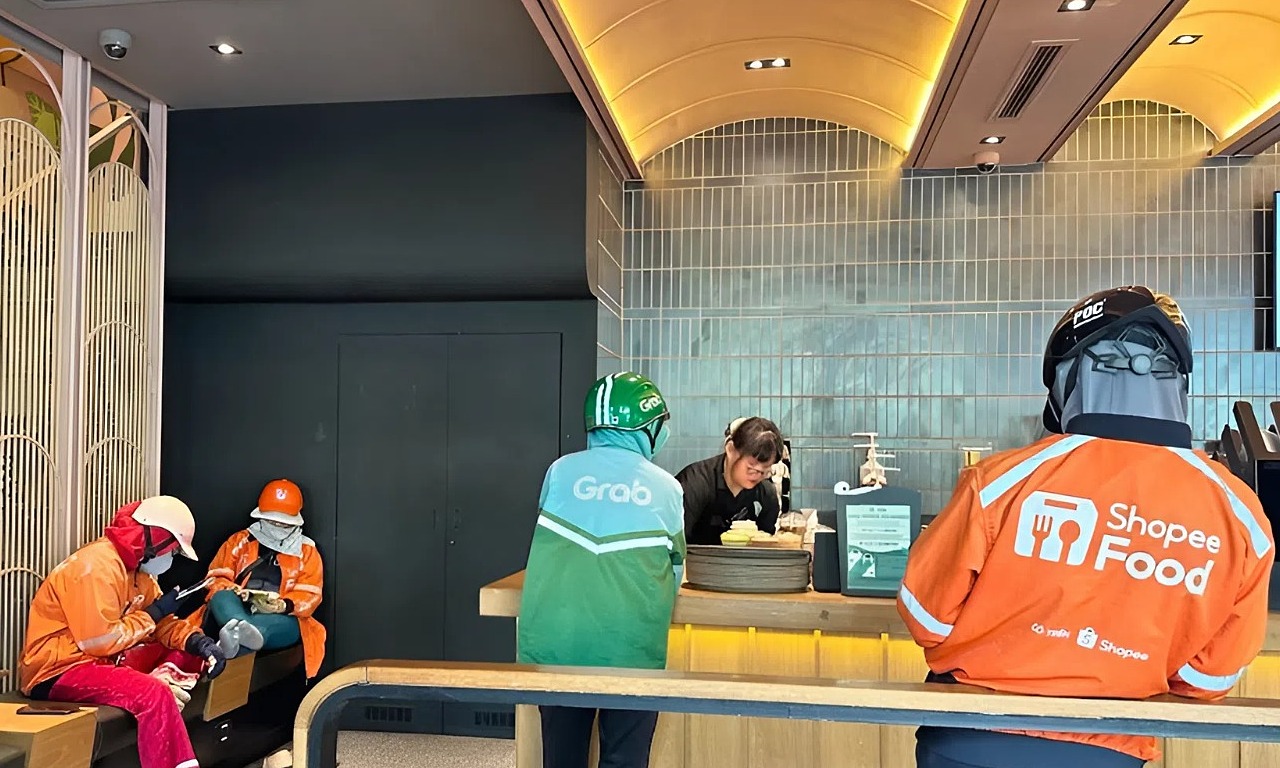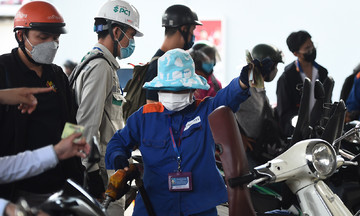According to a survey of online food delivery platforms in Vietnam by market research firm NielsenIQ, ShopeeFood and GrabFood hold the largest market shares, at 56% and 36% respectively. Be's beFood ranks third.
NielsenIQ calculated these percentages based on the number of orders placed within 7 days during a consumer survey conducted in April. For example, by region, ShopeeFood had the highest number of orders during the same period, accounting for 63% of total orders.
Another survey, conducted by online market research firm Decision Lab in Hanoi, Da Nang, and Ho Chi Minh City, yielded similar results. ShopeeFood and GrabFood together hold approximately 90% of the market in Hanoi and Ho Chi Minh City. These two platforms almost completely dominate the Da Nang market.
In Hanoi, ShopeeFood leads with a 56% market share, while GrabFood dominates the Ho Chi Minh City market with 50%. Ho Chi Minh City is also where beFood has the strongest presence, with an 11% market share, higher than its 9% share in Hanoi. Decision Lab calculated these figures by interviewing approximately 1,000 consumers about their food and beverage orders via apps in the two days prior to the survey.
Decision Lab noted that ShopeeFood users often favor items like milk tea, fast food, and snacks. GrabFood customers, meanwhile, order more full meals like rice dishes, seafood, healthy foods, and juices and coffee. This also correlates with age demographics, with ShopeeFood dominating the 16-24 age group, while GrabFood is more popular among those 35 and older.
According to the "e-Conomy 2024" report by Google, Temasek, and Bain & Company, the size of Vietnam's online ride-hailing and food delivery market reached 4 billion USD last year, a 12% increase compared to 2023, and is projected to reach 9 billion USD by 2030.
Meanwhile, the German online data platform Statista estimates that Vietnam's online food delivery market will reach nearly 2.8 billion USD this year, with a 9.34% annual growth rate until 2030. This market could reach nearly 4.4 billion USD by the end of the decade.
 |
Delivery drivers wait to pick up drinks at a cafe on Nguyen Thi Minh Khai Street, Ho Chi Minh City, 3/2025. Photo: Dy Tung |
Delivery drivers wait to pick up drinks at a cafe on Nguyen Thi Minh Khai Street, Ho Chi Minh City, 3/2025. Photo: Dy Tung
Vietnam's food delivery market is growing rapidly thanks to the popularity of smartphones, busy lifestyles, and the preference for convenient dining, according to Statista. "Food delivery services have become a regular habit for a large portion of Vietnamese consumers, especially in the three major cities of Hanoi, Ho Chi Minh City, and Da Nang," Decision Lab observed.
However, this market has seen fierce competition over the past three years. In 2023, six platforms participated: ShopeeFood, GrabFood, beFood, GoFood, Baemin, and Loship. However, Baemin ceased operations in Vietnam in 12/2023. In 2024, Gojek withdrew in September, taking GoFood with it. At the end of last year, the domestic platform Loship also exited the market.
The dominant market share of ShopeeFood and GrabFood is likely to fluctuate in the coming period with the entry of Xanh SM. Last month, this platform began rolling out its Xanh SM Ngon food delivery service with a network of over 2,000 selected restaurants in Hanoi, aiming to expand nationwide.
Xanh SM has the advantage of its growing two-wheeled ride-hailing service. The platform's food delivery service emphasizes partnerships with restaurants that have food safety certifications and a commitment to accurate menu photos. ShopeeFood and GrabFood are leveraging artificial intelligence (AI) to help restaurant partners increase sales through marketing optimization and new features.
For example, GrabFood offers group ordering and solutions for solo diners, as well as selling vouchers for dine-in meals. ShopeeFood uses AI for affiliate marketing and livestreaming to stimulate demand.
Nguyen Hoai Anh, a representative of ShopeeFood, assesses that the food delivery market in the coming period has both potential and challenges, requiring platforms to constantly innovate, from expanding partnerships and optimizing technology to enhancing the customer experience. "We will promote the application of AI to better understand and accurately assess the preferences, needs, and daily eating habits of users," Ms. Hoai Anh said.
Vien Thong












